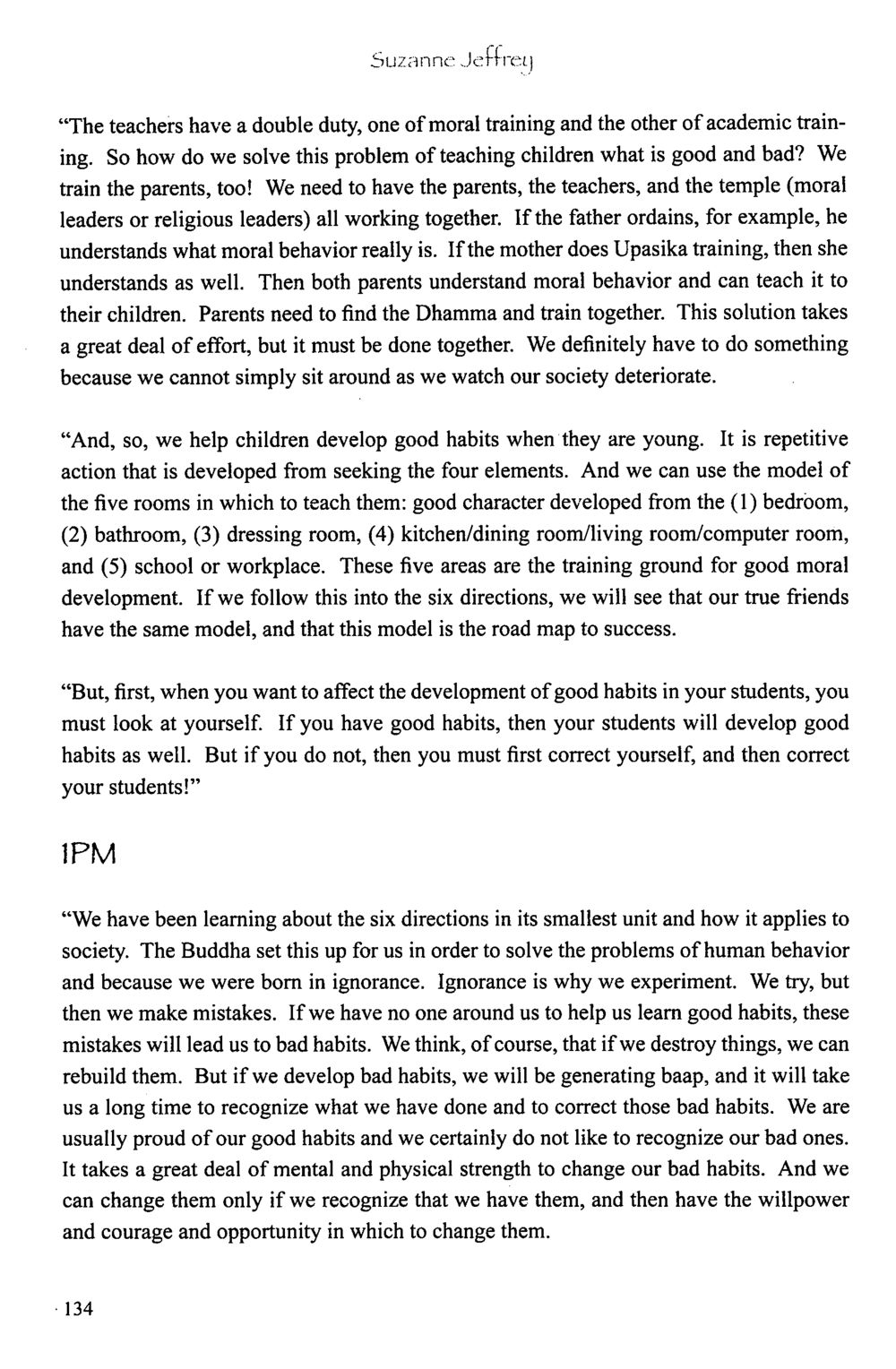The Role of Parents and Teachers in Moral Training : หน้า 134/164
The Meeting with a Dhamma Master : หน้า 134/164 Exploring the importance of collaboration between parents, teachers, and moral leaders in teaching children good habits and moral behavior.
26 ครั้ง

สรุปเนื้อหา
In this text, Suzanne Jeffrey emphasizes the dual responsibility of teachers in academic and moral training. It suggests that parents must also be involved in teaching good habits alongside teachers and moral leaders for effective child education. Developing moral behavior is crucial, and collaboration between parents, teachers, and spiritual leaders is essential. The discussion revolves around the impact of good habits and behavior learned from parents, extending to various aspects of a child's environment. The text outlines a framework based on the 'five rooms' model for moral development, encouraging self-reflection among teachers to promote good habits in students. Additionally, it cites the teachings of the Buddha regarding overcoming ignorance in order to foster good behavior and correct bad habits, which require recognition and dedicated effort.
หัวข้อประเด็น
- moral training
- collaboration between parents and teachers
- good habits development
- the role of spiritual leaders
- the five rooms model
- self-reflection in teaching
- overcoming bad habits
ข้อความต้นฉบับในหน้า
หน้าหนังสือทั้งหมด




































































































































































